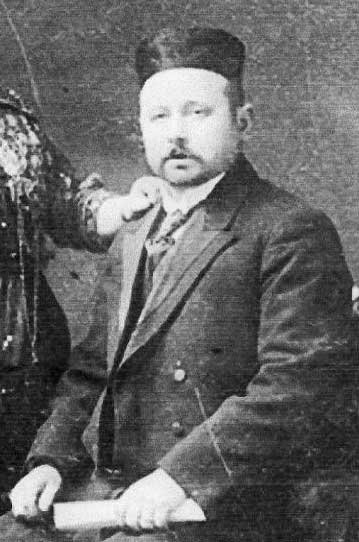Family History: A 150-Year Journey Through the Sokolovitz/Berman Saga (Now with Extra Chutzpah)
When we first embarked on tracing our roots, the stories of our ancestors felt like a cholent left simmering too long—mysterious, lumpy, and in desperate need of salt. But through kvetching over dusty archives, swapping tales over enough smoked salmon to bankrupt a deli, and bonding with cousins we didn’t know we had (shoutout to Mishpacha: The Extended Cut), we’ve stitched together a saga spanning 150 years. Think Fiddler on the Roof, but with more name changes and fewer spontaneous dance numbers.
Cups of Tea, Smoked Salmon, and Newfound Cousins
Genealogy isn’t just about dates and documents—it’s about connection. Over tea so strong it could double as paint thinner and bagels schmeared thicker than a bubbe’s guilt, we’ve laughed with relatives who materialized out of thin air like dybbuks at a séance. One cousin’s attic coughed up a photo of Rachael Chaia, her expression screaming, “Why are you digging up my business?” Another shared a diary entry about Jacob’s tailor shop in London’s East End proof that even in 1890, Jewish moms were still asking, “But does it pay well?”
The Sokolovitz-Katz Union: A Match Made in Shtetl Heaven
Elias Sokolovitz and Esther Katz likely wed in late 19th-century Eastern Europe—Russia? Belarus, Lithuania? Who knows! Their marriage certificate is probably buried under three pogroms and a cholent pot. The Katz name (short for Katzenellenbogen, because why use one syllable when ten will do?) hints at rabbinical roots. Were we related to the Katzes who wrote Talmudic commentaries? Or the ones who kvelled over the perfect kugel? Stay tuned.
Simon Sokolovitz/Berman: The Man, The Myth, The Name-Changing Legend

Meet Simon Berman, our great-great-grandfather and patron saint of bureaucratic confusion. Born in Belarus, he fled to London, swapped “Sokolovitz” for “Berman” (likely after a customs officer butchered his surname like a shochet with a dull knife), and spawned a dynasty. His siblings? Rachel, Jacob, and Marks though their surnames bounced between Sokolove, Sakolove, Soklovitz, and Saklovitz like a game of dreidel gone rogue.
The variations in their surname—Sokolove, Sakolove, Soklovitz, Saklovitz—hint at the challenges of tracking ancestors across borders and languages. As many Jewish families immigrated to new lands, names often evolved phonetically or were anglicized, leaving a trail of clues (and occasional confusion!) for future generations.
From Belarus to London: A Journey Fuelled by Chutzpah and Chopped Liver
In the shtetl of Ivanyets, Belarus, Simon’s parents, Elias and Esther, raised their kids under tsarist rule, pogroms, and the ever-present question: “When are you leaving?” By the 1890s, Simon, brother Marks, and sister Rachel Chaia fled to London, trading shtetl life for East End tenements. Jacob, the brother who stayed behind? He drew the short straw, babysitting aging relatives while the others perfected the art of British tea-drinking.
Meanwhile, Rachel Chaia and her husband Jacob Kreitzer sailed to America, rebranding as “Kritzer” because Ellis Island officials had the handwriting of drunken chickens. Their kids, Harry and Katie, became the OG American dreamers—though we’re still waiting for their reality show.
Roots in Ivanyets: The Sokolovitz Name
The family name Sokolovitz (later anglicized to Berman in the UK and Sokolove/Sakolove in the U.S.) echoes through the cobblestone streets of their ancestral home. Around 1887, Simon married Katie Berman—though the exact location of their wedding remains a mystery. Was it in the rolling hills of Belarus or amid the foggy bustle of London? What we know for certain: their first child, Alec, was born in London in 1887, anchoring the family’s new life in England.

The Ones Who Stayed: A Silence Louder Than a Shofar
Not everyone escaped. Jacob’s daughter Elkie remained in Belarus, married, and raised three kids. Their fate? A haunting blank page in our family album—a reminder that survival sometimes meant leaving pieces of your heart behind.
Memories Light the Way (And Occasionally Burn the Kugel)
What keeps this story alive? A cousin’s tale of Rachel Chaia’s iron will (“She could stare down a Cossack”). A sepia photo of Elias and Esther, their eyes screaming, “Take the kids and RUN.” Even a scribbled address on a ship manifest becomes a treasure when you’ve got bubbe level detective skills.
A Call to the Mishpacha: Let’s Plotz Together!
Got a dusty photo of Great-Uncle Mordechai? A letter complaining about London’s weather? A rumor that we’re distantly related to The Nanny’s Fran Fine? We need you! Together, we’ll turn whispers into megillahs and ensure no name fades into the treyf abyss.
After all, family isn’t just who we come from—it’s who we annoy at weddings, who steals your rugelach recipe, and who insists you’re too thin.
“Share your stories. Ask your elders. And for heaven’s sake, pass the lox.”
✉️ P.S. To the cousin hoarding Simon’s tefillin or Jacob’s tailor bills: Your attic’s a goldmine. Call us. We’ll bring babka. 🕵️♀️a) flowing!
